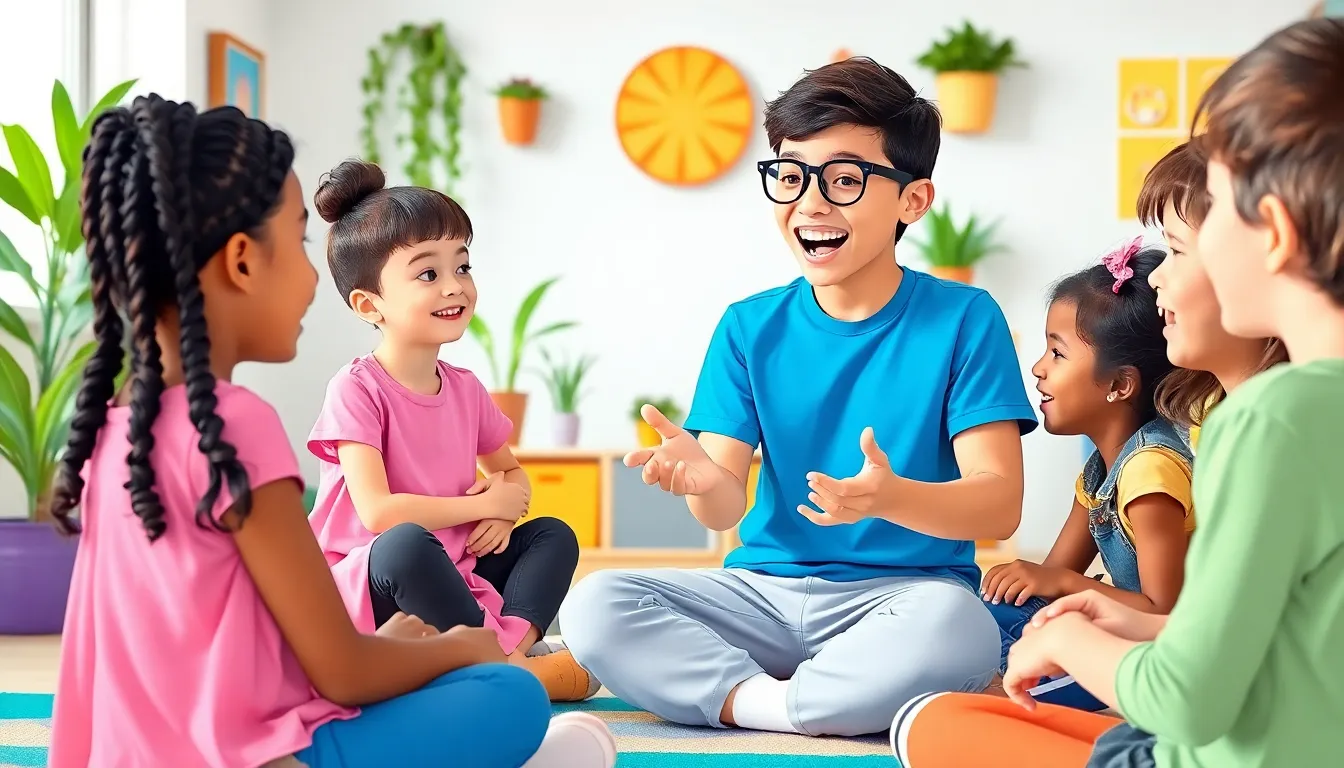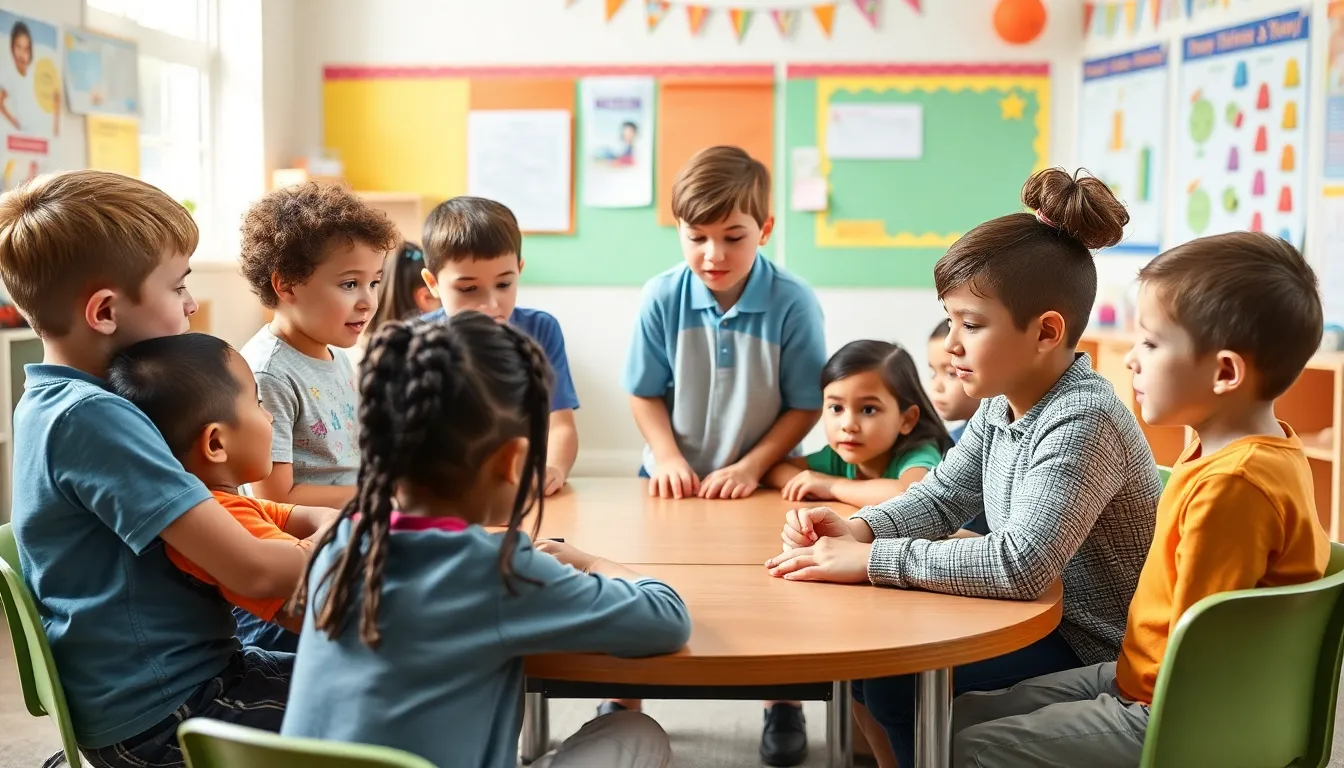The Best Fluffy Pancakes recipe you will fall in love with. Full of tips and tricks to help you make the best pancakes.

Conflict Resolution Activities for Kids: Fun Ways to Teach Important Life Skills
Navigating the wild world of childhood can feel like a never-ending episode of a reality show where everyone’s vying for the last cookie. Conflicts are bound to arise, whether it’s over toys, playtime, or who gets to be the superhero. But fear not! With the right conflict resolution activities, kids can transform their squabbles into teachable moments, all while having a blast.
Conflict Resolution Activities for Kids
Conflict resolution plays a crucial role in children’s development. Understanding and managing disputes equips kids with essential life skills.
Importance of Conflict Resolution for Kids
Conflict resolution teaches kids to navigate disagreements effectively. Mastering this process promotes empathy and enhances their social interactions. Skills gained foster better communication, allowing children to express feelings and perspectives. Additionally, conflict resolution encourages cooperation among peers, leading to lasting friendships. Addressing disputes constructively reduces aggression and promotes emotional well-being. As children learn to resolve conflicts, they cultivate a sense of responsibility for their actions, which builds their confidence.
Key Skills in Conflict Resolution
Effective conflict resolution relies on several key skills. First, active listening enables children to comprehend others’ viewpoints. Expressing emotions clearly ranks second, as it helps kids articulate feelings without escalation. Negotiation is another vital skill, allowing compromises that satisfy all parties involved. Consequently, problem-solving capabilities guide children to identify solutions collaboratively. Critical thinking fosters analysis of situations, enhancing decision-making processes. Lastly, teamwork builds the foundation for cooperative relationships, where children support one another in resolving conflicts. Each skill contributes to a child’s overall ability to navigate social challenges.
Types of Conflict Resolution Activities

Conflict resolution activities come in various forms, each designed to teach children how to effectively handle disputes. Effective activities enhance communication skills and encourage problem-solving.
Role-Playing Scenarios
Role-playing scenarios engage children by letting them act out different conflict situations. Players can take on various roles, which allows them to experience multiple perspectives. Through this method, kids practice empathy and develop understanding for one another. Scenario examples include negotiating shared toys or resolving a disagreement during group play. Each enactment reinforces critical thinking and effective communication.
Group Discussions
Group discussions foster open communication among children, helping them articulate feelings and viewpoints. In structured formats, participants can share their thoughts on a recent conflict. Facilitators guide these dialogues, ensuring everyone feels heard and respected. During conversations, kids learn to listen actively and validate each other’s experiences. These discussions build teamwork skills while equipping children with strategies to resolve future conflicts.
Creative Arts and Expression
Creative arts and expression enable children to channel their feelings constructively. Activities such as drawing, painting, or acting allow kids to express emotions related to conflicts. By sharing their artwork or performances, they convey experiences in a non-threatening way. Utilizing creativity not only enhances emotional release but also nurtures collaboration among peers. Engaging in artistic projects builds a positive outlet for resolution and understanding.
Implementing Conflict Resolution Activities
Effective conflict resolution activities require an intentional approach. Creating the right environment enhances children’s willingness to engage in these activities.
Setting the Right Environment
A supportive atmosphere encourages open dialogue. Use calming visuals to create a peaceful setting. Arrange seating in a circle to promote inclusivity. Active participation thrives when children feel safe and valued. Incorporating soft background music can further ease tensions. Adults should model patience and empathy during discussions. Establishing ground rules helps guide interactions and ensures respect. Observers can offer constructive feedback without judgment, allowing children to learn from each encounter.
Age-Appropriate Activities
Activities should match the developmental stages of children involved. Younger children benefit from simple role-playing scenarios. They can imitate everyday conflicts, allowing for relatable experiences. Older children can engage in more complex discussions that delve into problem-solving strategies. Team-based activities, like group projects, teach collaboration and mutual respect. Games that require negotiation foster essential communication skills. Adaptations to existing games can also illustrate conflict resolution concepts effectively. Providing choices empowers children, encouraging them to take responsibility for resolving disputes.
Benefits of Conflict Resolution Activities for Kids
Conflict resolution activities yield significant advantages for children. They help children develop crucial skills needed for effective communication and relationship management.
Improved Communication Skills
Engaging in conflict resolution activities sharpens children’s communication skills. Active listening becomes a focal point, allowing kids to process others’ viewpoints. Clear articulation of feelings follows, enabling better expression during disputes. Children learn to formulate and ask questions, promoting understanding and clarity in conversations. Furthermore, these activities create opportunities for constructive feedback, teaching kids how to respond thoughtfully to feedback rather than react defensively. With each interaction, self-confidence builds, empowering children to express themselves comfortably in various social situations.
Enhanced Empathy and Understanding
Participating in conflict resolution exercises enhances empathy and understanding among children. Role-playing enables them to experience conflicts from different perspectives, fostering appreciation for others’ feelings and attitudes. When kids articulate their emotions in group discussions, they learn to recognize and validate their peers’ experiences. These activities encourage an open mindset, which is integral for fostering compassion. Through creative projects, children can express their emotions creatively, leading to deeper insights into themselves and their friends. As empathy develops, so does the ability to form positive, respectful relationships, laying a foundation for healthy social interactions.
Conclusion
Conflict resolution activities provide children with essential skills that extend beyond playtime disputes. By engaging in these activities, kids learn to communicate effectively and develop empathy towards others. This not only enhances their social interactions but also builds confidence as they navigate various challenges.
Creating a supportive environment for these activities is vital. When children feel safe and valued, they’re more likely to express themselves openly and learn from their experiences. Incorporating age-appropriate activities ensures that all children can benefit, whether through simple role-playing or more complex discussions.
Ultimately, fostering conflict resolution skills in children equips them for future relationships and social dynamics. As they practice these skills, they’re not just resolving conflicts but also laying the groundwork for a more empathetic and understanding generation.
